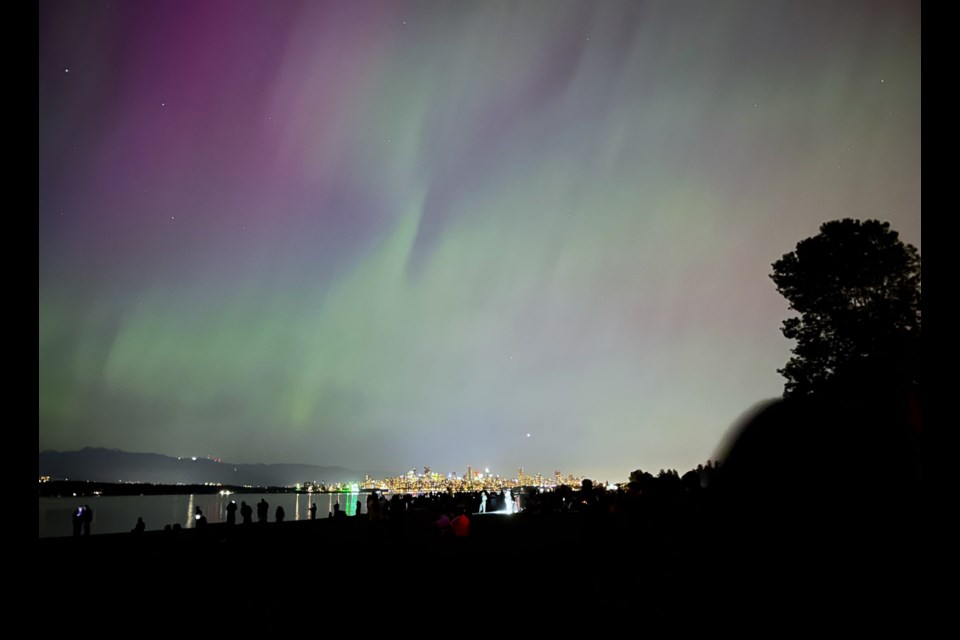Locals may see the northern lights dance low on the horizon above the Lower Mainland this week.
While the region saw everything from heavy rain to large hailstones to thunderstorms over the weekend, the Metro Â鶹´«Ã½Ó³»weather forecast currently includes warming temperatures this week.
V.I.A.'s Downtown Centre Weatherhood station shows a high of 18 C and a low of 13 C with dry conditions and skies clearing heading into the evening on Tuesday, June 18.
The National Oceanic and Atmospheric Administration (NOAA)'s Space Weather Prediction Center observed a minor (R1) over the past 24 hours resulting in an "occasional loss of radio contact" but did not observe any geomagnetic storms. It also isn't predicting any over the next couple of days.
But the aurora borealis may still appear on the horizon across a large swath of North America.
The University of Alaska Fairbanks (UAF) expects the aurora will be active on Tuesday, June 18, with displays overhead from "from Inuvik, Yellowknife, Rankin, and Iqaluit to Juneau, Edmonton, Winnipeg, and Sept-Iles" and from "Vancouver, Great Falls, Pierre, Madison, Lansing, Ottawa, Portland (Maine), and St. Johns" (see slide two).
The university's online aurora monitor map shows what regions the aurora's green glow will span overhead areas where it will appear low on the horizon. Additionally, there is a brief description below the map of the aurora activity on that particular day. You can switch to other days to see the forecast, too.
Unfortunately, a nearly full moon may obscure the vibrancy of the display.
The colours of the aurora often appear grey or milky when looking at the sky; the human eye doesn't always pick up colour at night, particularly when it is very dark.
While a camera with a long exposure is useful for capturing the vibrancy of the aurora, the newest cellphones have a darklight mode that will also capture colours the human eye can't see at night.
Stay up-to-date with hyperlocal forecasts across 50 neighbourhoods in the Lower Mainland with V.I.A.'s Weatherhood.



